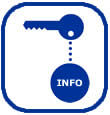 Research on Mental Models
Research on Mental Models
- Self-regulation and self-monitoring can positively influence student behavior changes (Rock, 2005).
- Effective classroom management practices emphasize the need for students to take increasing responsibility for organizing and directing their own learning (Brophy, 1996).
- Self-regulation and self-monitoring are two skills that can positively influence student behavior. Modeling plays an important role in developing these two skills (Bandura, 1986; Schunk & Zimmerman, 1996).
- It is suggested that time management be the first skill taught students and that instruction begin the first day of school (Medland, 1990).
- Students who feel they have little control over the outcomes of their achievements develop a sense of “learned helplessness" (Boggiano & Katz, 1991; Sedek & McIntosh, 1998). They give up quickly when encountering difficulty (Stipek, 1998).
- “Intellectual helplessness” is created by faulty instruction and inadequate study strategies (Sedek & McIntosh, 1998).
- Students who believe they are capable of accomplishing a task are generally more persistent and likely to make greater effort rather than give up (Bandura, 1997; Schwarzer, 1992).
- Students with learning goals are attracted to challenging tasks that provide opportunities to develop new competencies, and they are more persistent when encountering difficulty (Dweck, 1998).
- Success tends to raise a child’s level of selfefficacy; failure tends to lower it; once a strong level of efficacy has been developed the child
becomes more immune to the negative impact of future failures (Nurmi et al., 2003; Schunk, 2003). - Jones & Jones (2004) noted six emotional/social deficits shared by many “at risk” students:
1. A history of poor adult-child relationships
2. Low level of personal efficacy or power
3. An external locus of control
4. Low academic self-esteem
5. Low level of empathy, difficulty discerning the feelings or views of others
6. Poor problem-solving skills
